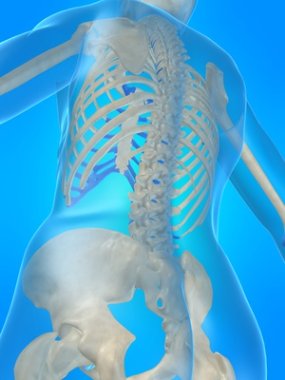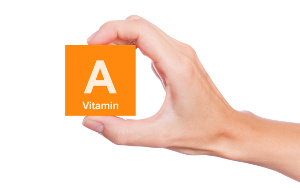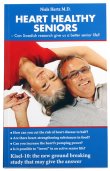Make sure to get enough vitamin D for your bones - throughout life
 Vitamin D deficiencies are very common. They increase children's risk of developing weak bones, but they also make adults more prone to osteoporosis.
Vitamin D deficiencies are very common. They increase children's risk of developing weak bones, but they also make adults more prone to osteoporosis.
Vitamin D enables us to absorb calcium from our intestine and also help the body embed calcium into bone tissue. We obviously need vitamin D for building and maintaining strong bones throughout life. However, far too many people have porous bones and osteoporosis (brittle bones) that neither cause pain nor discomfort - before it is too late - as a result of fractures and accompanying problems.
A major cause of osteoporosis is the widespread lack of vitamin D that deserves significantly more focus both in terms of prevention and treatment. There are even many children who lack vitamin D. Because of this, this their bones are not as strong and that may have consequences later in life.
Osteoporosis is widespread and many are unaware of it
- It is estimated that every 3rd woman and every 8th man older than 50 has osteoporosis
- The bones lose strength from within, and there are no exterior symptoms of the disease
- The result of osteoporosis is decalcified, weak, and porous bones that break easily
Widespread vitamin D deficiency
The summer sun is our primary source of vitamin D, which we synthesize from a type of cholesterol in our skin. Excess vitamin D gets stored in the liver for later use, but many of us become vitamin D deficient during winter. A recent (Danish) study of travel agency employees revealed that almost half of the participants lacked vitamin D. According to The National Food Institute, 90% of all Danes fail to get enough vitamin D from their diets.
Vitamin D deficiencies have become increasingly common in the past 15-20 years - mainly due to factors such as lack of sun exposure, the use of sun cream, fear of dietary fat, and long-term consumption of cholesterol-lowering medicine. Also, older individuals and dark-skinned people have difficulty with synthesizing vitamin D. Research even suggests that certain gene variations may increase the risk of having lower vitamin D levels.
New threshold levels call for winter supplementation
There is a lot of evidence pointing at the lack of vitamin D and the health-related consequences as being a lot worse than originally assumed. When measuring vitamin D levels in the blood, the official threshold levels are 50 nmol/L. However, many leading experts claim that this level is insufficient and call for levels of at least 70-100 nmol/L for optimal disease prevention.
According to Dr. Jens-Erik Beck Jensen, Chief Physician at Hvidovre Hospital, we are not likely to obtain these substantially higher vitamin D levels by means of revised dietary guidelines. In fact, an increasing number of researchers recommend people to take vitamin D supplements during the entire winter period.
The classic vitamin D deficiency diseaseIn old days, many children acquired rickets, a bone disease that caused soft and deformed bones and inadequate formation of tooth enamel. This was a result of living in densely populated urban areas with multi-story housing complexes that did not allow the sun to reach the lower street levels. English children working in the mines were especially susceptible. |
Detection of vitamin D deficiency and actual prevention
It is possible to establish the body's vitamin D status by measuring levels of the natural 25-hydroxyvitamin 3 in a blood test. Still, it makes more sense to take a vitamin D supplement during the winter period to prevent a deficiency, altogether. Technically, it is possible to have normal vitamin D levels in December and a vitamin D deficiency in March. This may affect the bones, the immune system, and several other vitamin D-dependent functions in the body.
Bones require the right balance between calcium and magnesium
Many supplements for bone support contain calcium and vitamin D. However, strong and healthy bones also require magnesium. This nutrient functions as a doorman that allows calcium to enter bone cells (that depend on high calcium levels), whereas the calcium concentration in soft tissue (muscles) must be limited. If we consume too much calcium in relation to our magnesium intake, we risk that our bones lack calcium. Instead, because there is too little magnesium to control calcium concentration in both bone and soft tissue, too much calcium enters the soft tissues (muscle cells), causing these muscles to malfunction. This leads to problems like muscle cramps and spasms.
References.
Sundhedsmagasinet på DR - om D-vitamin mangel 18. 01.2016
Overlæge: Vi får ikke D-vitamin nok. www.dr.dk/Sundhed/Dinsundhed/2010
Miriam Meister: Danskernes D-vitamin niveau er bestemt af deres gener. DTU Fødevareinstituttet 2015
Sara Castiglioni et al. Magnesium and Osteoporosis: Current state of Knowledge an Future Research Directions. Nutrients 2013
https://www.osteoporose-f.dk/om-knogleskoerhed/kalk-og-d-vitamin
Search for more information...
- Created on .












 "After about one week of taking the Q10 supplement I could feel a huge difference," says 23-year old Alan Piccini, who has been suffering from extreme fatigue and muscle aches ever since he was a child.
"After about one week of taking the Q10 supplement I could feel a huge difference," says 23-year old Alan Piccini, who has been suffering from extreme fatigue and muscle aches ever since he was a child. “Taking capsules with co-enzyme Q10 has freed me of the severe side effects of my cholesterol lowering medicine,” Mrs Franken explains.
“Taking capsules with co-enzyme Q10 has freed me of the severe side effects of my cholesterol lowering medicine,” Mrs Franken explains.